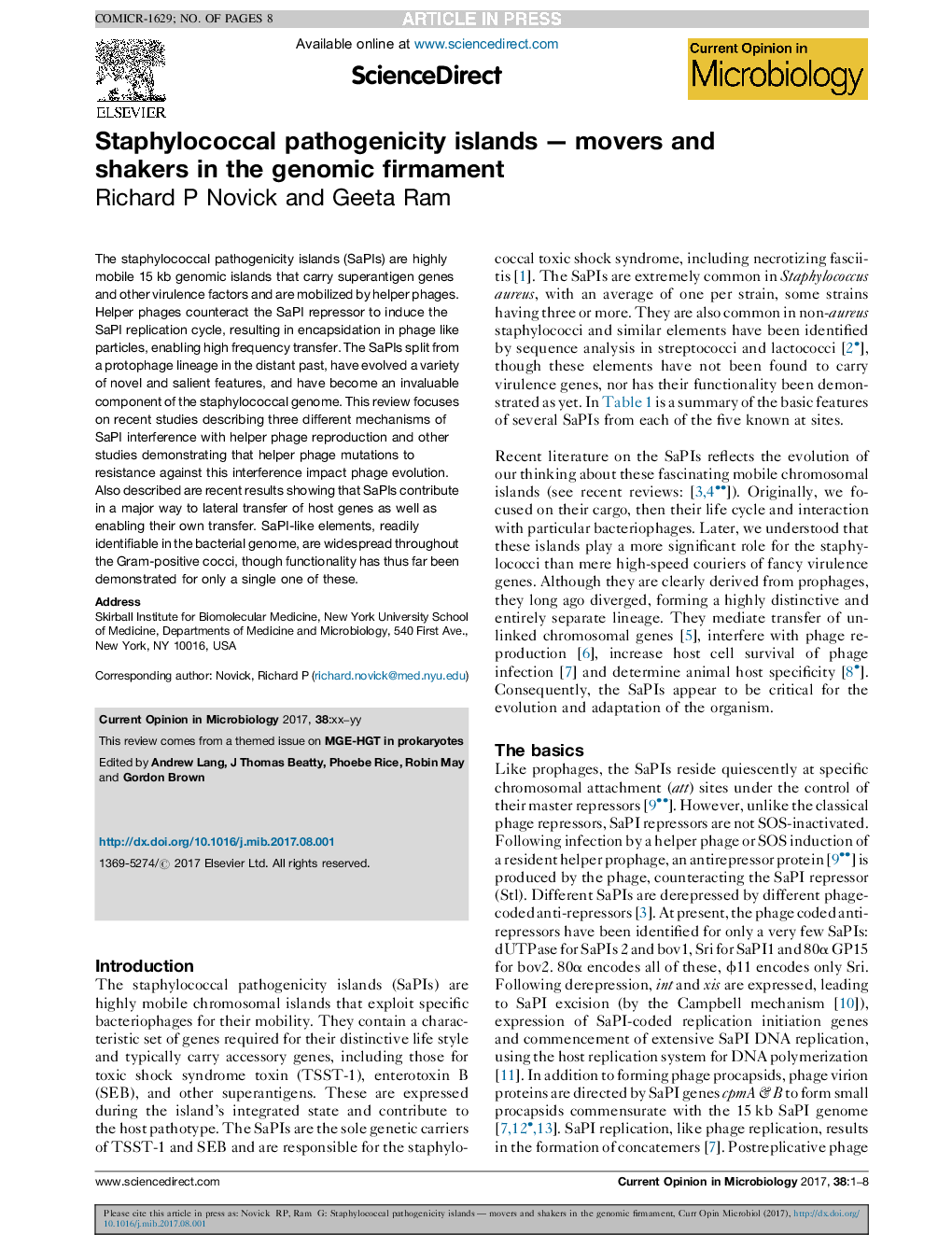| Article ID | Journal | Published Year | Pages | File Type |
|---|---|---|---|---|
| 8745148 | Current Opinion in Microbiology | 2017 | 8 Pages |
Abstract
The staphylococcal pathogenicity islands (SaPIs) are highly mobile 15Â kb genomic islands that carry superantigen genes and other virulence factors and are mobilized by helper phages. Helper phages counteract the SaPI repressor to induce the SaPI replication cycle, resulting in encapsidation in phage like particles, enabling high frequency transfer. The SaPIs split from a protophage lineage in the distant past, have evolved a variety of novel and salient features, and have become an invaluable component of the staphylococcal genome. This review focuses on recent studies describing three different mechanisms of SaPI interference with helper phage reproduction and other studies demonstrating that helper phage mutations to resistance against this interference impact phage evolution. Also described are recent results showing that SaPIs contribute in a major way to lateral transfer of host genes as well as enabling their own transfer. SaPI-like elements, readily identifiable in the bacterial genome, are widespread throughout the Gram-positive cocci, though functionality has thus far been demonstrated for only a single one of these.
Related Topics
Life Sciences
Immunology and Microbiology
Microbiology
Authors
Richard P Novick, Geeta Ram,
